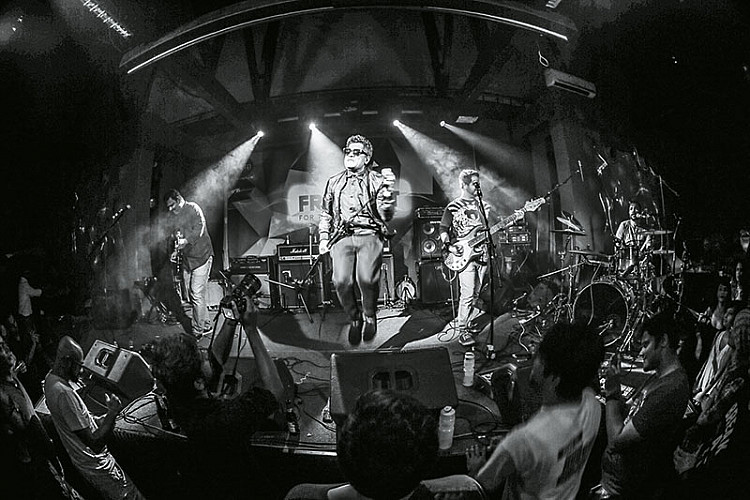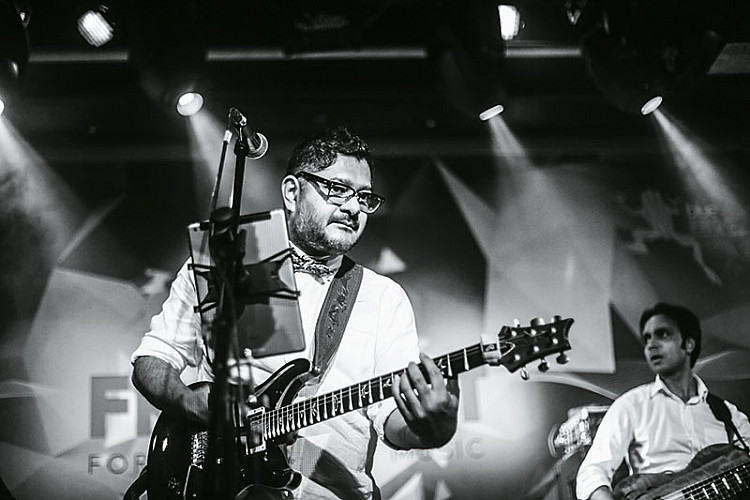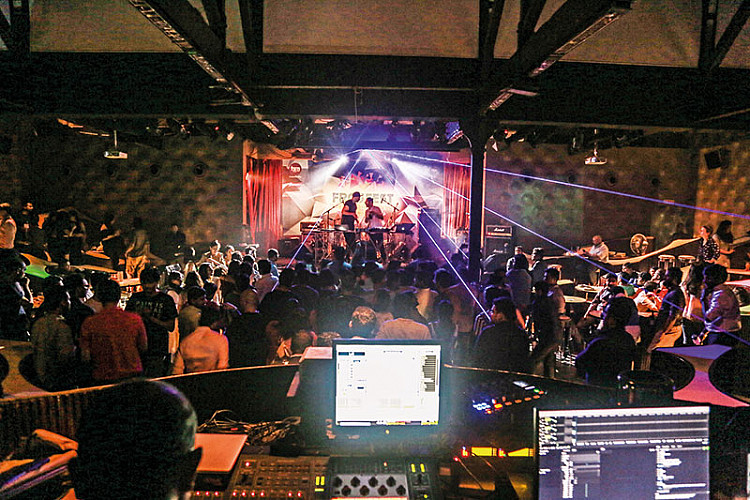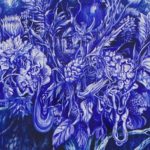Blue Frog: Paying Homage To The Iconic Venue
A few moons ago, the blues descended upon the usually effervescent city of Mumbai and carried it into the misty clouds of jazz one last funky time. For a certain spaceship-esque sanctuary that had long served as messiah to the masses was taking off into the ether until it found a hospitable landing place from where to groove again. Tears streamed down the faces of the worshippers as they jammed in blues heaven one last time. And so it was that an iconic musical lung in a city choked with noise finally breathed its last.
I caught up with some of the founding partners of Blue Frog at the Highlight Films office in the congested Todi Mill compound at Lower Parel, just a few yards away from the nightclub. Turns out it was a good day to meet them. It was Mahesh Mathai’s birthday and Sumer Vaswani (Blue Frog’s managing director) informed me that the team had won the Best Live Performance Venue — Mumbai award the night before at the Indian Nightlife Convention and Awards. Just two weeks after the nine-year-old venue had closed its doors, succumbing to a spike in rental rates that had made it impossible to sustain what was essentially an ambitious labour of love. What had gone wrong? Why was a place this popular, and with so much heart behind it, unable to survive?
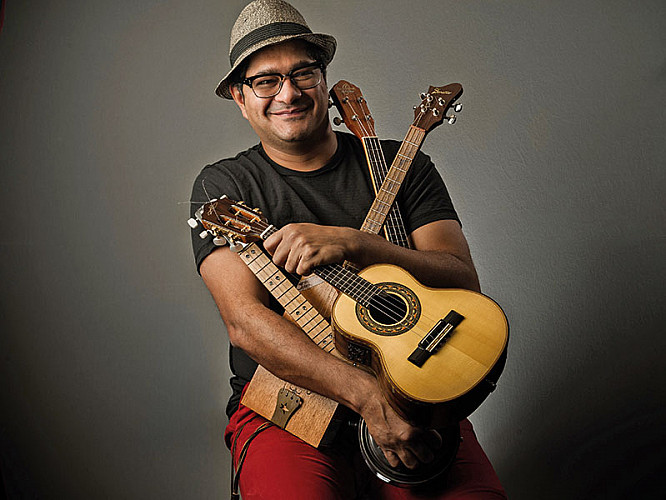
The partners had zeroed in on the space back in 2006 when Todi Mill Compound was just that — a compound. Empty, with a dirt road. And in it, a warehouse of 6,000 and something square feet with high ceilings and so much potential. Young Turks Ashutosh Phatak (Ashu) and Dhruv Ghanekar, being musicians and composers themselves, took it upon themselves to radically transform the hitherto largely mom-and-pop indie music production business in India by introducing a studio model with state-of-the-art equipment. The idea was to create a sort of win-win co-operative, enabling musicians to work in a professional setup rather than from home, by contributing 10 to 15 per cent of their earnings for studio upkeep. Ashu revealed that ad-film guru Mathai had originally come on board as an investor. “We wanted to build eight recording studios in here,” reminisced Ashu. “The musicians were initially very enthusiastic. But when it was time to sign contracts, they backed out at the last minute, unwilling to forego a share of their income when they could do it so much cheaper at home, lacking the vision to gauge the potential for growth.” Undaunted, the partners paid the landlord to hold the space for them till they decided what to do with it. Till Mathai said, “Why not a club?”
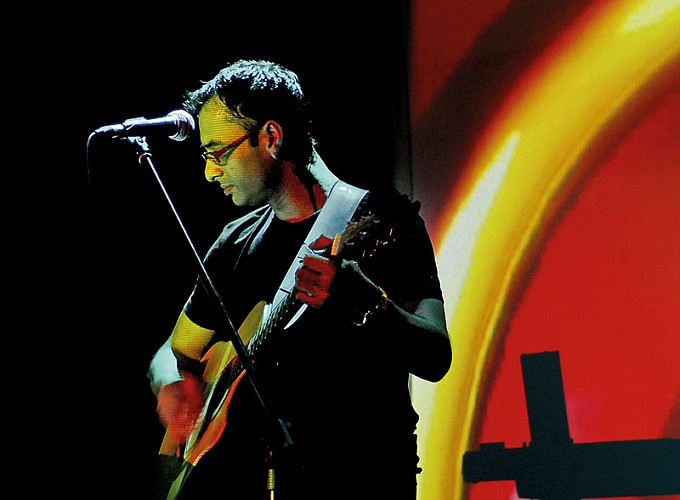
Nothing about the partners’ journey has been conventional. They offered leading architects an honorarium to pitch for the opportunity to design the 6,500 square feet of warehouse space. And because it was a novel and challenging project, they agreed. The concepts started pouring in. Ashu grinned, “Then one day Malini (Akerkar, chef Rahul Akerkar’s wife) suggested that we try out this guy Kapil Gupta but said he wouldn’t participate in any competition. He just came to us one day with this drawing, which we instantly loved, and then he tore it up, and said, ‘That wasn’t even the design. Now I will start designing’.” The landmark nightclub debuted in over 50 international magazines. It was a lavish, sprawling space with just 10 odd pod-like tables at staggered heights, all facing the stage, giving it the air of a spaceship about to take off — and take off, it did!
Zakir Hussain himself performed there within three months of the opening in 2008. In a pre-Facebook era, this was all the publicity needed. Blue Frog had arrived. Things snowballed from there and before long, the illustrious and the industrious were queuing up for a chance to perform at the country’s most iconic jazz club. And not just from India either. Renowned international musicians, many of them Grammy award nominees and winners, such as John McLaughlin, Angelique Kidjo, Mutemath, Anoushka Shankar, Manu Chao and countless others graced the stage, bringing to India — for the first time in decades — the best of contemporary alternative music. And of course some of Mumbai’s own — Adrian D’Souza, Ranjit Barot, Gino Banks, Louis Banks and many others jammed regularly at the Frog, as it was fondly called. No wonder Barot’s words resonated on the last night when he said, “This is home. We are all one big family.” And he wasn’t just talking about the founders. He was gesturing towards the audience — all teary-eyed standing in the pit, gazing up at their favourite stage one last time. “Think about it; 300 nights a year, for 9 years, you’re listening to the best music in the world. Live! As a musician, it has been such an education,” smiled Ghanekar.
The Frog’s contribution to the Indian music fraternity has been indisputably large. Changing the ethics of economics is but the least of its claims to fame. It has launched the careers of many — often being the first major gig that catalysed much-deserved success. Although the partners were reluctant to take credit for playing a role in any band’s success, after much prodding it was revealed that Nikhil D’Souza was one prodigious talent that started out at the Frog in the early days. “Even The Comedy Store got a platform at Blue Frog,” said Mathai. It was typical of his generosity to support other people’s talent and dreams. I remember approaching him to host my poetry slam event One Night, Stand! back in 2008 when such things were practically unheard of in India. Many of those poets have gone on to become lyricists and famous writers but they still fondly remember those nights.
The place has always been all heart. Other causes that it has lent its support to over the years include TedX, Teach for India and Dharavi Rocks — a joint educational project between the Frog and Acorn Foundation wherein foreign and Indian bands were brought in to conduct music workshops for kids of ragpickers. The underlying belief being that music makes a difference.
Blue Frog has always taken music seriously. So seriously, in fact, that when I asked the partners what they considered their most difficult moment, Mathai recalled their first international gig in 2008, when Sara Tavares, a Portuguese pop-folk-jazz singer actually walked off the stage in the middle of a performance. Ashu narrated the story with a grin, “She was playing this soft song, and people were talking…she requested them to stop and they didn’t…so she finally left. Then Malini and I came on the stage and told the audience, ‘If you don’t like the music, you can leave’. We invited her back on stage and everyone sat quietly, a little stunned. We made headlines for being a club that yelled at its audience.” Ghanekar smiled wryly, “We are wiser now. In hindsight it was probably bad programming for a Friday night.”
Blue Frog arrived at a time when few such venues existed and when Lower Parel was hardly the hub it has now become. I asked Mathai why they had chosen this space. “There were lots of corporate offices in the area and ad agencies at Famous Studios back then…so we figured we had an audience. Now of course there is a lot of competition — there are so many entertainment options today. It has become very difficult to draw the numbers necessary to keep a place this large running six days a week. We had to take a call on whether to renew the lease — it broke our hearts to admit this just wasn’t making business sense.”
This brings us to the crux of the issue. The reason the Frog is so iconic for the music fraternity is that it has rewritten the ethical code. No musician was ever asked to play for free. Bucking the prevalent international trend wherein musicians generally got to keep a share of the gate, musicians were paid irrespective of collections — except for a few occasions, such as album launches or when an institution brought in a foreign band. At such times, the band played for free — but customers entered free too. Further, Blue Frog was not interested in being a restaurant that had live music — it wanted to be a live music venue that also served food. Patrons were allowed to enter free before 9 p.m., as the partners believed that by providing access to good music, they were cultivating a taste for it and building their own loyalists. And their impeccable curatorial skills have certainly earned them a following.
The partners plan to organise pop-ups in the interim until they launch their two new venues — one in South Bombay and one in the north, where the creative energy of the city is largely concentrated. I wondered how they intended to differentiate themselves, but quickly acknowledged that what set them apart was not the physical space but the taste with which they curated music. The safety net that they provided their loyalists by creating an environment where women felt safe, the young and not-so-young felt comfortable, and regulars felt they belonged. Blue Frog had metamorphosed into a community of music makers and lovers that relied on each other to sustain themselves. It had achieved cult status.
I asked the partners if they had any parting advice for young musicians. “Get into it! There is such a dearth of musicians. Especially given that as a people we all love listening to music, there should be so many more types of bands,” said Mathai. “Being a musician is like being an entrepreneur. It’s not just about standing up on a stage and singing. You have to know how to pull a crowd,” said Phatak. He also felt that people’s understanding of what it meant to have a career in music was limited. “People think becoming a musician means you have only two choices — being a rock star on stage or being A. R. Rahman!” He encourages young musicians to explore other career avenues within the music industry instead of settling for a day job in an unrelated field.
To round up, I posed a really unfair question. “Name your favourite band or musician,” I challenged. “Just one,” Vaswani answered without hesitation. “George Michael.” Ghanekar chose Joe Zawinul. Mathai concurred, “Yes — Weather Report.” (a group co-founded by Zawinul). Ashu’s pick was, “Peter Gabriel. And not just for the music.”
Thank you, Blue Frog. And not just for the music.
Related posts from Verve:
Verve Trending
Sorry. No data so far.
us on Facebook to stay updated with the latest trends

